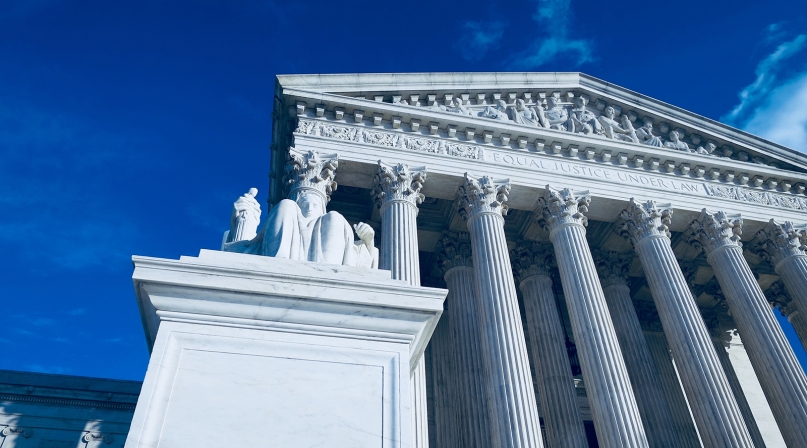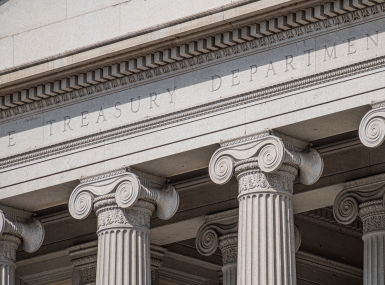Supreme Court gives OK to collecting tax on internet sales
Upcoming Events
Related News

Key Takeaways
In a 5-4 decision, the Supreme Court ruled Thursday that states and local governments can require internet retailers to collect sales taxes, even if the online company has no physical presence like a factory or store, in the state.
Removing the “physical presence” standard is a significant change in the sales tax collection landscape. Sales taxes are the second greatest portion of revenue for counties nationwide, and uniform enforcement and collection is a top priority for county governments. The South Dakota v. Wayfair decision ending the physical presence standard is a significant win for local governments, though it does not provide a national, standardized solution.
Learn More
State and local governments are losing between $8 billion to $13.4 billion a year in uncollected taxes for online sales, the Government Accounting Office estimated last year. Some studies put that figure as high as $26 billion a year, according to the International Council of Shopping Centers. Local sales taxes are collected in 38 states.
In its decision in the case, South Dakota vs. Wayfair, the high court overturned a 1992 ruling that had let taxes go unpaid for many online purchases. It upheld a South Dakota law that required retailers in the state to collect a 4.5 percent tax on purchases.
Ultimately the court overturned previous cases and sent the case back to the South Dakota Supreme Court. This means the court is leaving the decision up to each state over whether to enforce sales tax collection on remote purchases. Under this framework, each state may have to pass legislation requiring remote sellers to collect these taxes, and if the law is challenged in court, each state supreme court will be responsible for determining what an appropriate standard for “substantial nexus” is in the state, whether it meets standards outlined in the Commerce Clause, and generally if it is appropriate or overburdensome.
The National Retail Federation said Thursday that federal legislation is necessary to spell out details on how sales tax collection will take place, rather than leaving it to each state to interpret.
To require a vendor to collect sales tax the vendor must still have a “substantial nexus” with the state. The Court found a “substantial nexus” in this case based on the “economic and virtual contacts” Wayfair has with the state.
The National Association of Counties (NACo) and other leading organizations that represent state and local governments applauded the decision — a big win for their members:
“Today’s ruling will ensure parity for Main Street retailers and will help close an ever-growing sales tax collection loophole that results in billions of dollars in revenue going uncollected each year,” NACo said in a statement. “For 26 years, the court has waited for Congress to fix this problem, but Congress demurred. Therefore, the court revisited the issue and recognized that the nature of contemporary commerce necessitates that all sellers, regardless of their location, follow the same laws. No more, no less.”
In the Supreme Court’s decision, Justice Anthony Kennedy wrote the majority opinion, stating that brick-and-mortar stores were being put at a disadvantage by having to charge a sales tax while online retailers did not. That rule “prevented market participants from competing on an even playing field,” he wrote.
“It is unfair and unjust to those competitors, both local and out of state, who must remit the tax; to the consumers who must pay the tax; and to the states that seek fair enforcement of the sales tax — a tax many states for many years have considered an indispensable source for raising revenue.” he wrote.
In a dissenting opinion, Chief Justice John Roberts said that the decision could detract from online sales “significant and vibrant part of our national economy.”
The justices who voted in the majority were: Justices Anthony Kennedy, Clarence Thomas, Ruth Bader Ginsburg, Samuel A. Alito Jr. and Neil M. Gorsuch. Those who voted in the minority were: Justices John Roberts, Stephen Breyer, Sonia Sotomayor and Elena Kagan.
Mary Ann Barton, Jack Peterson and Lisa Soronen contributed to this report.
Attachments
Related News

White House OMB releases final revisions federal Uniform Guidance (2 CFR Part 200)
The White House OMB released final revisions to the federal Uniform Guidance that outline compliance and reporting requirements for federal financial assistance.

Treasury Department releases new obligation guidance for the ARPA State and Local Fiscal Recovery Fund
On March 29, the U.S. Department of Treasury released new FAQs related to their Obligation Interim Final Rule for the ARPA Recovery Fund.

Internal Revenue Service pilots free direct tax filing program in 12 states
On March 12, the IRS launched Direct File, a new pilot through which eligible taxpayers in 12 states can file their taxes for free using a simplified tool.